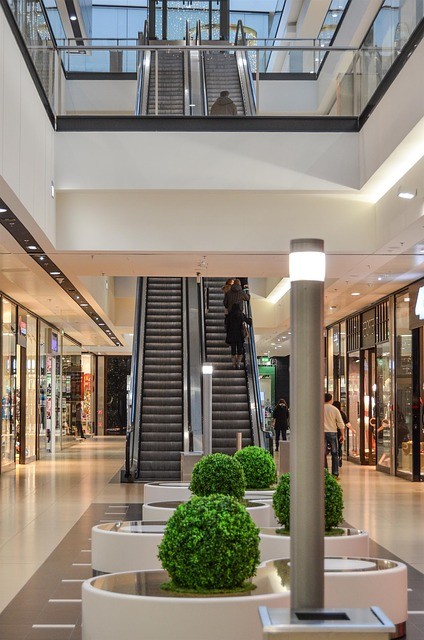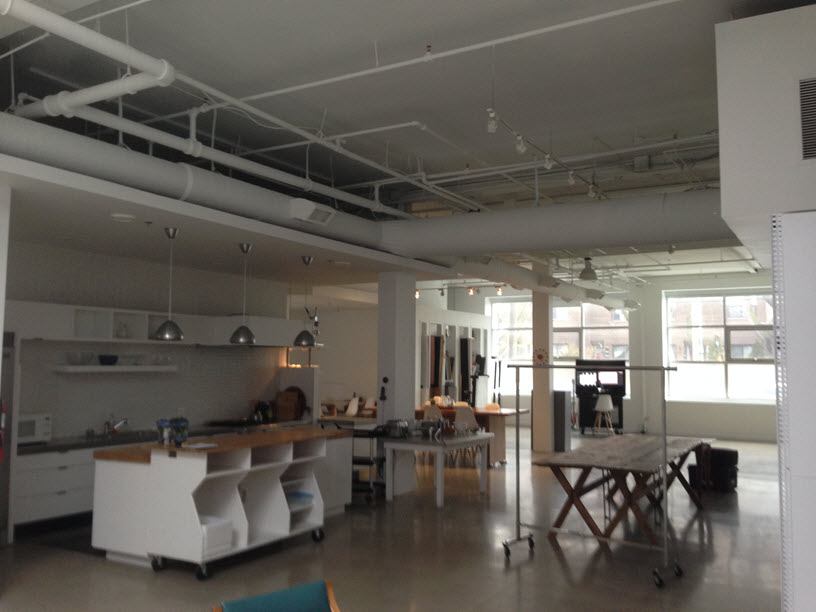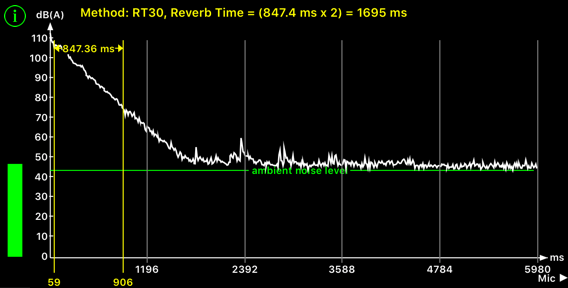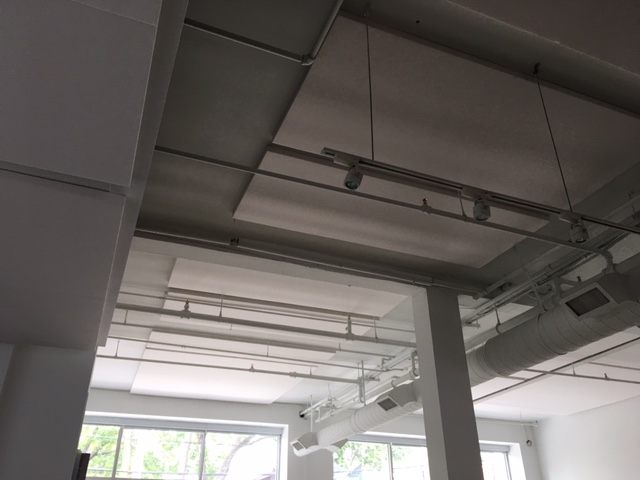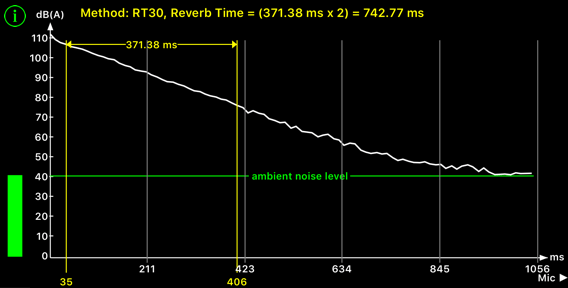Most public spaces, and many work locations and offices have very poor acoustics. Noises in the space just reverberate and appear to be much louder than the original source of the noise.
Here is an example recorded in a typical coffee shop with poor room acoustics:
More...
Surprisingly, it is quite easy to build an acoustically pleasant space, or fix room acoustics in an existing space by increasing sound absorption. Here is a case study example.
A case of improving room acoustics
Fiocca Studio called us to make their space more acoustically pleasant. The photography studio is located on ground floor in a two story industrial building. The overall dimensions of the space are approximately 12 m x 26.5 m and 4.2 m high. The floor is terrazzo concrete, the ceiling is drywall. The volume of the room is about 1,300 m3, including two offices in the south side of the room that are acoustically connected to the main space. Walls are finished in drywall and most of north wall are windows, see the photo below.
The studio has poor room acoustics and subjectively feels very reverberant due to insufficient sound absorption. This is caused by the fact that virtually all surfaces in the space are acoustically highly reflective.
I have measured the reverberation time, it is 1.695 seconds. Diagram below shows the reverberation decay curve. A space designed for speech of this volume should have reverberation time of about 1 second or less
Recommendations to improve room acoustics
I have recommend that room acoustics be improved by increasing sound absorption by placing sound absorbing panels in the studio space to reduce reverberation time from the existing 1.6 second to about 0.8 or less [1]. This will reduce the feeling of “liveliness” in the room and also slightly reduce the level of background noise. The required reduction in reverberation time will be achieved by installing 110 square meters of sound absorbers with Noise Reduction Coefficient (NRC) of 0.95.
The absorbing material should be fairly evenly distributed around the ceiling of the studio. I recommend using 2-inch thick sound absorbing panels. The reason for using panels thicker than 1 inch is that space designed for speech should have absorption at lower frequencies [1] requiring thicker absorbers.
Acoustically corrected space
I have covered most of the ceiling with the sound absorbing panels, see photo below.
The unpleasant hollow space echo is gone. After the installation of the panels, the reverberation was measured to be 0.7 s, see the diagram below . This is well within the desirable range [1]. The acoustical improvement is apparent immediately as one walks in to the space
Reference
[1] Master Handbook of Acoustics, Everest and Pohlmann, Sixth Edition, McGraw Hill 2015; p. 486-487
Please use the button below to request a quote to solve your acoustical problem, or submit your feedback using the form below.
